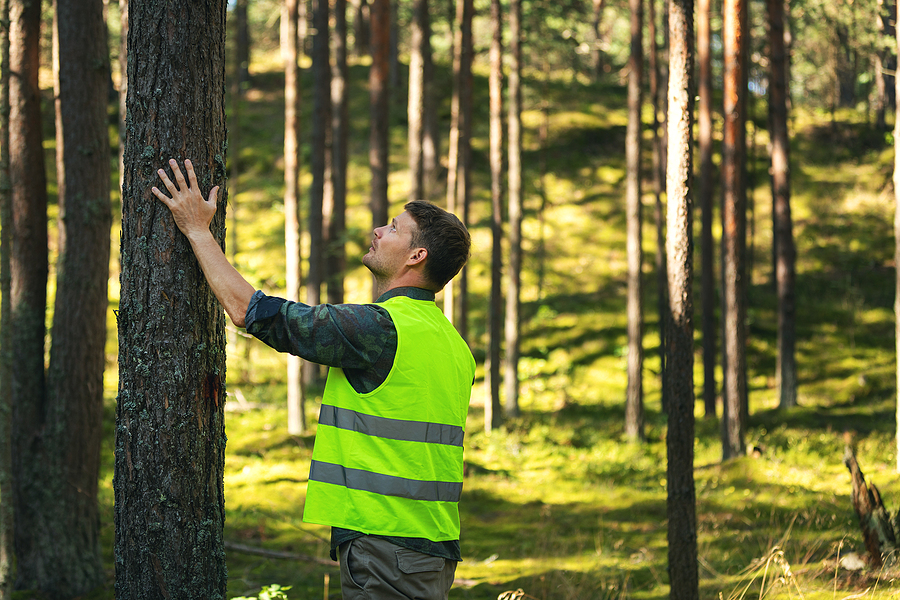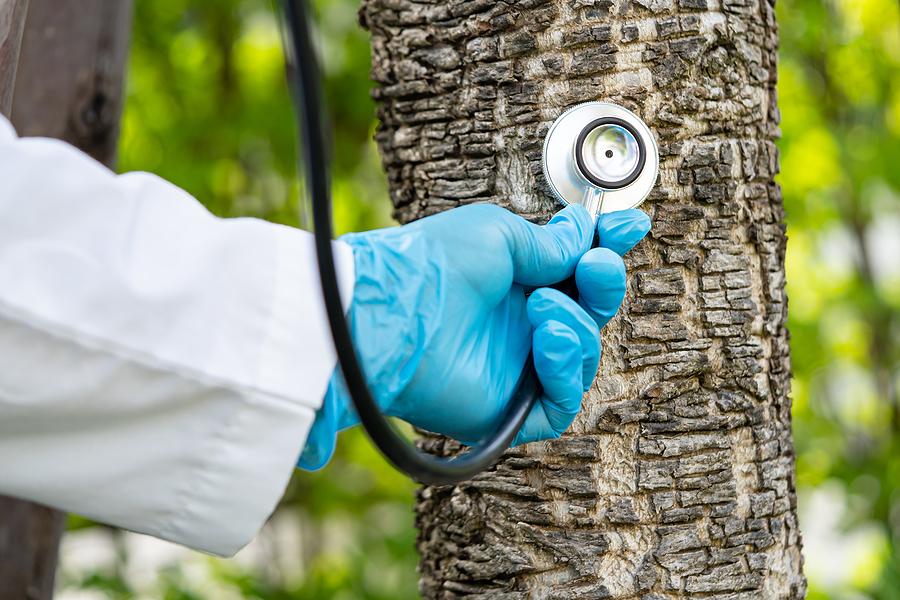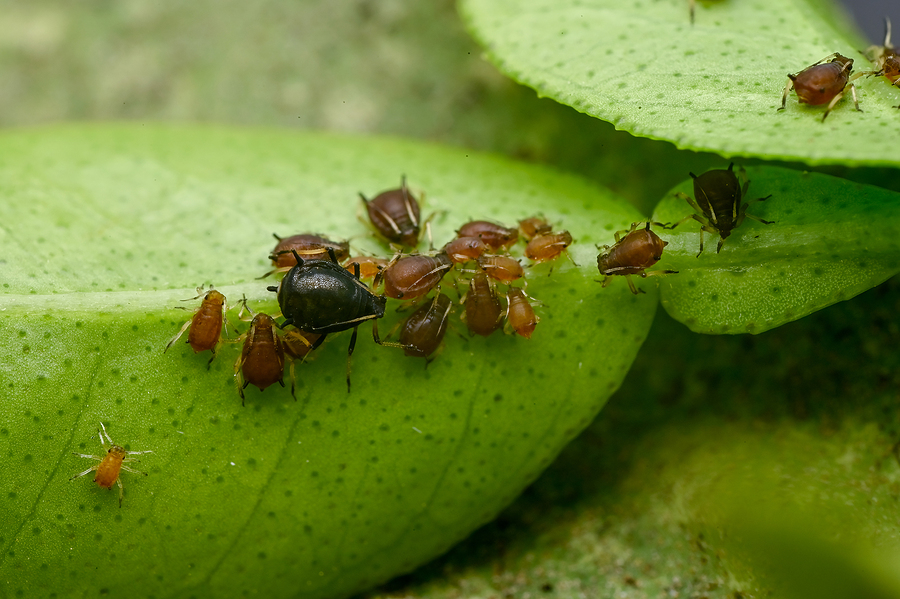Healthy trees enhance your property’s beauty and provide shade, clean air, and habitat for wildlife. But beneath the surface, unseen threats like root rot and fungal diseases can silently compromise tree health. Recognizing the early warning signs of these conditions is essential for protecting your landscape and preventing costly damage.
Root rot and fungal diseases account for up to 40% of tree mortality in urban environments. These conditions don’t always announce themselves with obvious symptoms, making vigilance crucial. Left unchecked, infected trees can spread diseases to healthy trees within a 50-foot radius, putting your entire landscape at risk.
This guide will help you identify the telltale signs of root rot and fungal growth in trees, understand what causes these problems, and learn when to call a professional tree service for help.

What Is Root Rot and How Does It Affect Trees?
Root rot is a condition caused by fungal pathogens that attack a tree’s root system. When roots become waterlogged or damaged, opportunistic fungi move in and begin breaking down the root tissue. This process disrupts the tree’s ability to absorb water and nutrients from the soil, leading to a cascade of health problems.
The damage often starts underground, where you can’t see it. By the time visible symptoms appear above ground, the disease may have already progressed significantly. Understanding how to spot these symptoms early gives you the best chance of saving an affected tree.
Common Signs of Root Rot
Recognizing root rot symptoms requires careful observation of your tree’s overall appearance and growth patterns. Here are the most common indicators:
- Stunted Growth: Trees suffering from root rot often show reduced growth compared to previous years. New shoots may be shorter and thinner than normal.
- Yellowing Leaves: When roots can’t function properly, leaves don’t receive adequate nutrients. This deficiency typically manifests as yellowing foliage, particularly on the lower branches first.
- Premature Leaf Drop: Affected trees may shed leaves earlier than usual or during seasons when they should be fully foliated.
- Wilting Despite Adequate Water: If your tree appears wilted even though the soil is moist, compromised roots may be unable to transport water effectively.
- Soft, Mushy Roots: If you can carefully expose some of the root system, healthy roots should be firm and white or light-colored. Rotted roots appear dark, soft, and may have a foul odor.
- Thinning Canopy: The overall crown of the tree becomes sparse as branches die back from lack of nutrients.
Identifying Indiana-Specific Fungal Diseases in Trees
Fungal diseases present differently than root rot, though they can sometimes occur simultaneously. These infections typically produce visible growths or distinctive patterns that alert you to their presence.
Oak Wilt
This severe fungal disease poses a significant threat to oak trees throughout Indiana. Oak Wilt causes rapid defoliation and can kill a tree within weeks to months of infection. Oak trees are particularly susceptible, making early detection critical. Symptoms include browning leaves that start at the margins and progress inward, often with a distinct green-brown-tan pattern.
Dutch Elm Disease
Elm trees face this devastating fungal infection that has historically impacted Indiana’s urban forests. Dutch elm disease blocks water-conducting vessels in the tree, causing wilting and yellowing of foliage on one or more branches. Without intervention, infected elm trees typically die within one to two years.
Apple Scab
Common on apple and crabapple trees across Indiana, this fungal disease creates olive-green to brown spots on leaves and fruit. Severe infections lead to premature leaf drop and reduced fruit quality.
Anthracnose
This disease affects shade trees including sycamore, ash, and maple. Anthracnose causes irregular brown blotches on leaves, often following the leaf veins. Repeated infections can weaken trees over time, though it’s rarely fatal.
Powdery Mildew
Recognizable by its white or gray powdery coating on leaves and stems, powdery mildew affects numerous tree species throughout Indiana. While unsightly, it typically doesn’t cause permanent damage unless infections are severe and recurring.
Visible Signs of Fungal Growth
Beyond species-specific diseases, watch for these general indicators of fungal problems:
- Mushrooms or Conks at the Base: Fungal fruiting bodies growing from the trunk base or major roots signal internal decay. These structures indicate advanced fungal colonization.
- Bracket Fungi on Trunk or Branches: Shelf-like growths protruding from bark reveal that fungi have penetrated deep into the wood.
- Cankers: Sunken, discolored areas on bark often indicate fungal infection beneath the surface.
- Unusual Bark Texture: Cracking, peeling, or areas where bark appears abnormally soft may point to fungal activity.
- Discolored Streaks: Cutting into affected branches may reveal dark streaking in the wood, a sign of vascular disease.
Request a Quote for Sick Tree Removal Today ✅
Causes and Prevention of Root Rot and Fungal Diseases
Understanding what creates favorable conditions for these diseases helps you implement effective prevention strategies. Some common causes include:
- Poor Drainage: Waterlogged soil suffocates roots and creates ideal conditions for root rot fungi. Heavy clay soils in many Indiana locations can exacerbate this problem.
- Overwatering: Even well-meaning tree care can backfire when trees receive more water than they need, particularly in poorly draining soils.
- Soil Compaction: Compressed soil around the root zone restricts oxygen availability and water penetration, stressing trees and making them vulnerable to infection.
- Mechanical Damage: Wounds from lawn equipment, construction activity, or improper pruning create entry points for fungal pathogens.
- Stressed Trees: Any factor that weakens a tree—drought, nutrient deficiency, pest infestation—reduces its natural defenses against disease.
Prevention Tips for Healthy Trees
- Ensure Proper Soil Drainage: Before planting new trees, assess your soil’s drainage capacity. Amend heavy clay soils with organic matter, or create raised planting beds in areas prone to standing water.
- Avoid Overwatering: Established trees typically need less frequent watering than you might think. Water deeply but infrequently, allowing soil to dry somewhat between waterings.
- Use Mulch Correctly: Apply a 2-4 inch layer of organic mulch around trees, but keep it several inches away from the trunk to prevent moisture buildup against bark.
- Sterilize Pruning Tools: Clean cutting tools with a 10% bleach solution or rubbing alcohol between trees to avoid spreading fungal spores.
- Promote Good Air Circulation: Prune dense canopies to allow air movement through branches, which helps foliage dry quickly after rain.
- Select Disease-Resistant Species: When planting new trees, choose varieties bred for resistance to common local diseases like Oak Wilt. Consult with a professional tree service for recommendations suited to your specific location.
- Regular Inspections: Walk your property periodically to examine trees for early signs of disease, allowing for timely intervention before problems escalate.
- Preventative Fungicide Treatments: For high-value trees or species known to be susceptible, consider professional fungicide applications during vulnerable periods.
- Avoid Soil Compaction: Keep heavy equipment away from the root zone, which typically extends to the tree’s drip line or beyond.
- Professional Soil Testing: Have soil analyzed to identify and correct nutrient deficiencies that might stress trees and increase disease susceptibility.
When to Seek Professional Help
Some tree problems require expertise beyond basic homeowner care. Knowing when to call a professional tree service can mean the difference between saving a valuable tree and facing expensive dead tree removal.
Contact a Professional When:
You notice multiple symptoms of root rot or fungal disease affecting the same tree. Advanced infections often require specialized treatment protocols that professionals can implement effectively.
Large sections of the canopy are dying back rapidly. This suggests aggressive disease progression that needs immediate expert assessment.
Fungal fruiting bodies appear on the trunk or major limbs. These growths indicate internal decay that professionals must evaluate to determine the tree’s structural stability.
You’re uncertain about diagnosis. Tree diseases can be difficult to identify correctly. Professional arborists have the training to distinguish between various conditions and recommend appropriate treatments.
The affected tree is near structures or high-traffic areas. Diseased trees pose falling hazards, particularly during storms. Professionals can assess risk and recommend safe courses of action.
What Professionals Can Do
- Accurate Diagnosis: Certified arborists use systematic evaluation techniques and sometimes laboratory testing to identify specific pathogens affecting your trees.
- Treatment Plans: For salvageable trees, professionals develop comprehensive treatment strategies that may include fungicide applications, soil amendments, and cultural practice modifications.
- Risk Assessment: Experts evaluate whether diseased trees pose safety hazards and can safely remain on your property with treatment, or if removal is necessary.
- Tree Removal: When trees are beyond saving, professional tree services perform safe, efficient dead tree removal that protects surrounding landscape features and structures.
- Prevention Strategies: Based on site-specific conditions, professionals recommend preventative measures to protect remaining healthy trees from infection.
Wrapping Up
Early detection of root rot and fungal diseases gives you the best opportunity to save affected trees and prevent spread to healthy specimens. Regular observation, proper cultural practices, and prompt professional intervention when needed form the foundation of effective sick tree care.
Maple, oak, and elm trees deserve particular attention given their susceptibility to common Indiana tree diseases. These valuable shade trees represent significant investments in your property’s aesthetics and value, making their protection worthwhile.
If you’ve noticed concerning symptoms in your trees or want peace of mind about their health, don’t wait until problems worsen. Contact Us Today for a professional tree assessment. We will evaluate your trees’ condition and recommend the most effective course of action—whether tree removal or bracing for specimens that pose risks to your property or a referral to a certified arborist.
Related Post: Common Tree Fungal Diseases in the Midwest and How to Prevent Them









